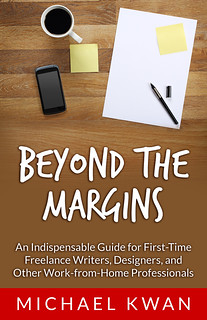
“I want the new tablet that is white.”
“I want the new tablet, which is white.”
Some people may look at the two sentences above and conclude that they both have effectively the same meaning. However, there is definitely a difference between using “that” and “which” in this kind of context and it comes down to the exact meaning that you’re trying to express.
“That” Provides a Restrictive Clause
In both sentences, the speaker is expressing interest in acquiring a new tablet, but we are not speaking about exactly the same situation. With the first sentence (using that), it is implied that there are multiple tablets available, presumably in other colors. By using “that” in this sentence, the speaker is saying that among all the tablets available, he wants the white one. Let’s look at another example.
“The car that is parked next to the fire hydrant is going to get towed.”
Again, we’d assume there are multiple cars and it is only the one “that is parked next to the fire hydrant” that is going to get towed. This is what we’d call a “restrictive” clause, because it restricts the definition of the subject. If we were to remove the “that” part of the sentence, the meaning would change. We wouldn’t know which tablet he wants. We wouldn’t know which car is going to get towed.
“Which” Provides a Non-Restrictive Clause
If we were to alter these examples to use “which” in place of “that,” we’d get entirely different meanings. IF the speaker says he wants the new tablet “which is white,” then this implies that there is only one type of new tablet and the “which is white” part of the sentence is simply providing additional information. If this part of the sentence were removed, the fundamental meaning would remain intact.
“I want the new tablet.”
Since there is only one tablet in question, it’s not necessary to indicate its color in order to be clear.
“The car, which is parked next to the fire hydrant, is going to get towed.”
Again, by using “which” in this sentence, we are implying that there is only one car of interest to us. We may have already indicated exactly which car in an earlier part of the discussion, for example. Given this, while it may be interesting to know it is parked next to the fire hydrant, this information isn’t necessary. We could, if we wanted, simply state the car is going to get towed.
You’ll also notice that when we use “which” in a sentence, that clause is surrounded by commas, offsetting it from the rest of the sentence. When we use “that” instead, no commas are present for this purpose.
That Was Easy?
This is understandably a very simplified explanation of the difference between “which” and “that.” You’re bound to encounter some situations where the choice can be more difficult, especially since “which” can also be used in a restrictive clause in some constructions.
“These are not the droids which you are looking for.”
“These are not the droids that you are looking for.”
Both of those sentences are equally acceptable, because “these” has already taken on the role of restricting which “droids” are being discussed. In fact, it’s better if you drop the which/that entirely and say, “These are not the droids you are looking for” instead. You will also notice that even though I used “which” in the first sentence, there is no comma. Again, this indicates a restrictive clause rather than a non-restrictive one.
It can be confusing, but the more you read and the more you write, the better you’ll able to “hear” the difference and know which word to use when.





Thanks so much for this, it was an extremely useful grammar 101. When to use “that” and when to use “which” has been a problem for me for a long time.